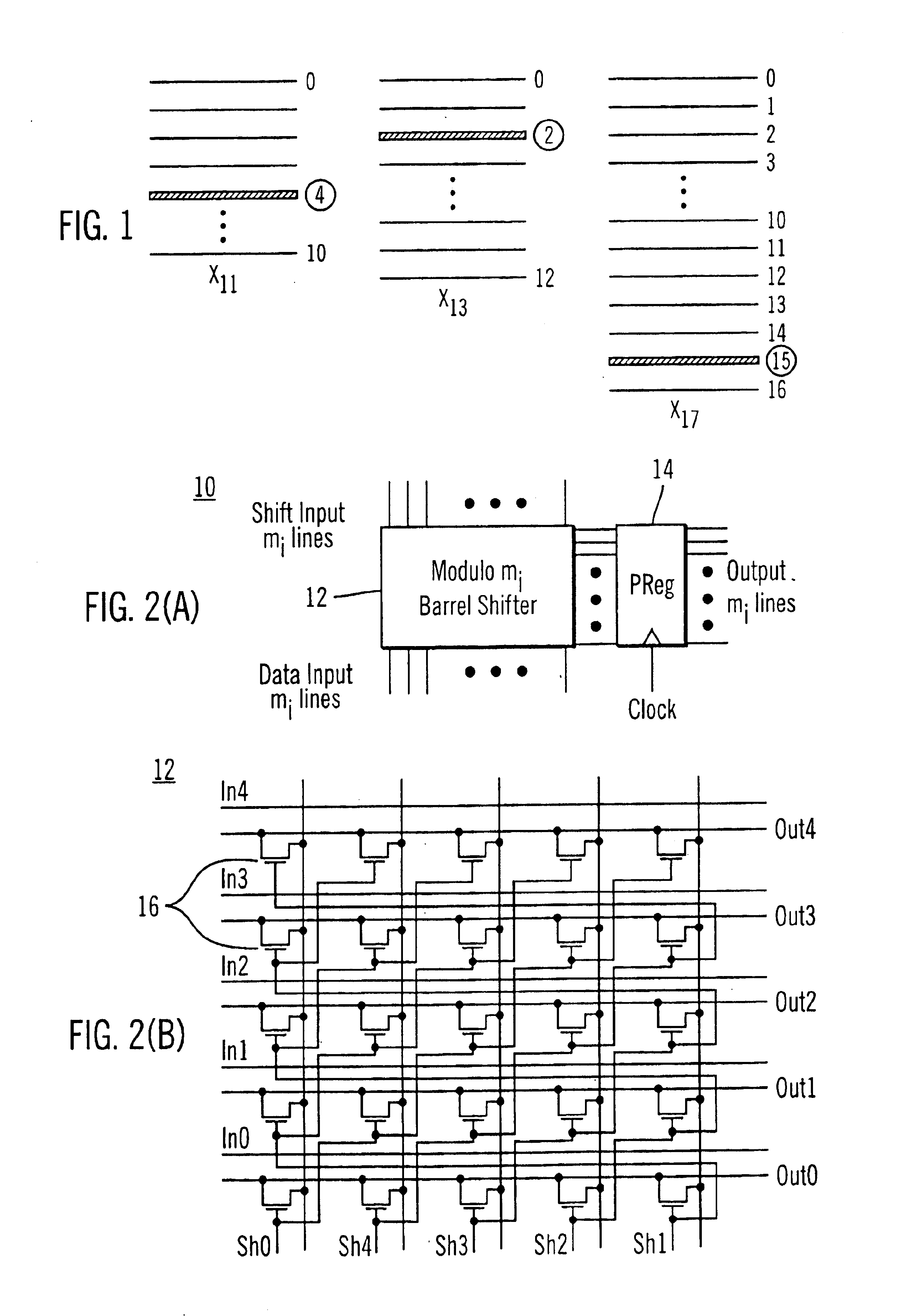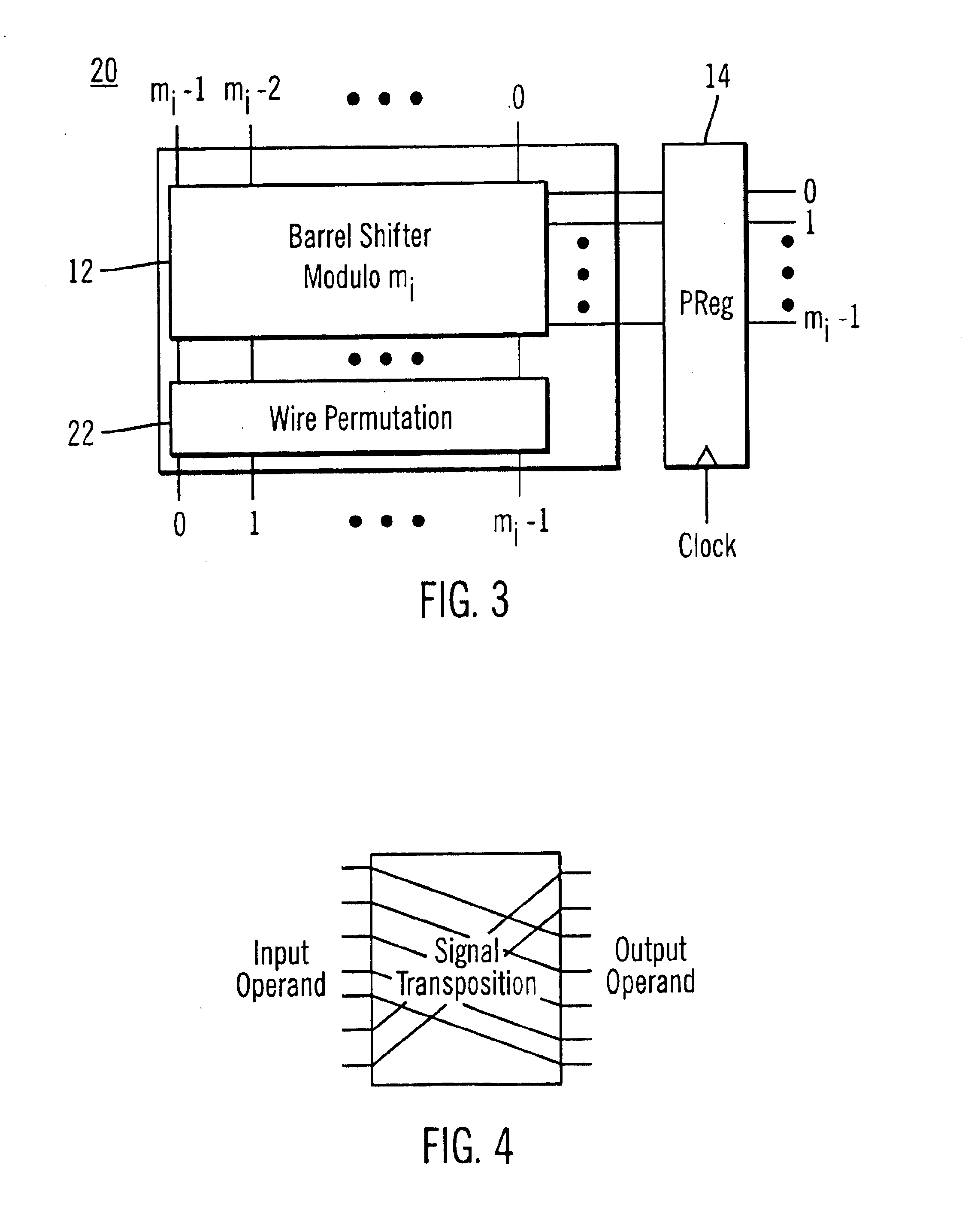Arithmetic circuits for use with the residue number system
a technology of residue number and arithmetic circuit, which is applied in the field of electromechanical circuits, can solve the problems of other operations, base extension, and reducing the speed of the circuit, and achieve the effects of reducing power dissipation, increasing speed, and increasing speed
- Summary
- Abstract
- Description
- Claims
- Application Information
AI Technical Summary
Benefits of technology
Problems solved by technology
Method used
Image
Examples
Embodiment Construction
[0050]Preferred embodiments of the present invention will be described in detail hereinbelow with reference to the attached drawings.
[0051]FIG. 8 shows an OHRNS modulo mi adder according to a preferred embodiment of the present invention. As shown, the adder 60 includes a barrel shifter 62 and a dynamic storage unit 64. The barrel shifter 62 computes the sum of the two operands as in the conventional OHRNS adder. In the illustrated embodiment, the dynamic storage unit 64 includes two cascaded inverter stages 66 and 67 for each output line of the barrel shifter 62. The cascaded inverter stages 66 and 67 dynamically latch the output of the barrel shifter 62 for downstream circuits by using a clocked inverter 66 as the first inverter in the cascade.
[0052]A preferred embodiment of the clocked inverter is shown in FIG. 9. The clocked inverter 70 has two PMOS transistors 72 and 74 and two NMOS transistors 76 and 78 arranged in series between the supply voltage Vdd and ground. The gates of...
PUM
 Login to View More
Login to View More Abstract
Description
Claims
Application Information
 Login to View More
Login to View More - R&D
- Intellectual Property
- Life Sciences
- Materials
- Tech Scout
- Unparalleled Data Quality
- Higher Quality Content
- 60% Fewer Hallucinations
Browse by: Latest US Patents, China's latest patents, Technical Efficacy Thesaurus, Application Domain, Technology Topic, Popular Technical Reports.
© 2025 PatSnap. All rights reserved.Legal|Privacy policy|Modern Slavery Act Transparency Statement|Sitemap|About US| Contact US: help@patsnap.com



